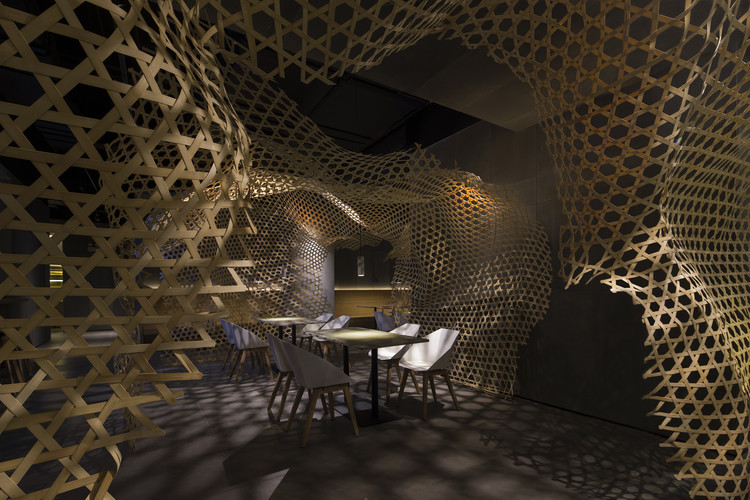
-
Interior Designers: Infinity Mind
- Area: 450 m²
- Year: 2017
-
Photographs:Haochang Cao, Songyang Ba

Text description provided by the architects. As bamboo is the most common material and symbolic extraction of Sichuan culture, the restaurant takes Sichuan Qingshen’s Bamboo-weaving Art as the medium and carries out the intangible culture of Sichuan with tangible material. How will a restaurant contains contemporary folk art that rooted in traditional culture grow upright and unafraid on this land, where the rupture of ancient and modern cultures long exists? The inheritance and re-creation of intangible cultural heritage of traditional culture is the key.















